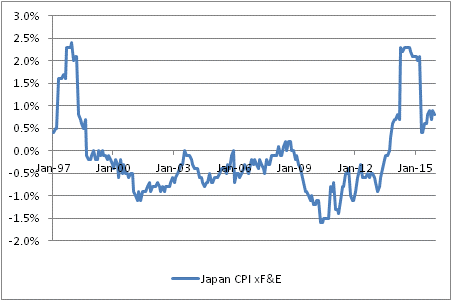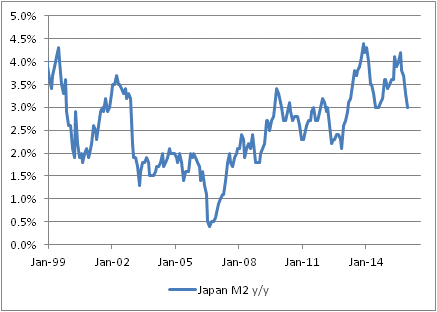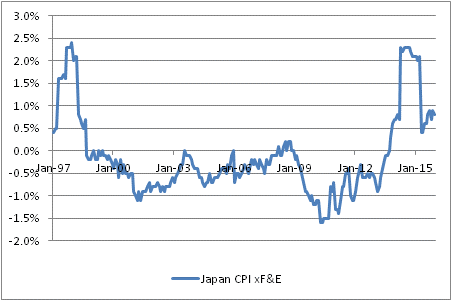The news on Friday that the Bank of Japan had joined the ECB in pushing policy rates negative was absorbed with brilliant enthusiasm on Wall Street. At least, much of the attribution for the exceptional rally was given to the BoJ’s move. I find it implausible, arguably silly, to think that a marginal change in monetary policy by a desperate central bank on the other side of the world – however unexpected – would have a massive effect on US stocks. Subsequent trading, which has reversed almost all of that ebullience in two days, suggests that other investors also may agree that just maybe the sorry state of earnings growth rates in this country, combined with a poor economic outlook and still-lofty valuations, should matter more than Kuroda’s gambit.
To be sure, this is a refrain that Ben Bernanke (remember him? Of helicopter infamy?) was singing last month, before the Federal Reserve hiked rates impotently, and clearly the Fed is investigating whether negative rates is a “tool” they should add to their oh-so-expansive toolbox for fighting deflation.
Scratch that. The Fed no longer needs to fight deflation; inflation is at 2.4% and rising. The toolbox the Fed is interested in adding to is the one that contains the tools for goosing growth. That toolbox, judging from historical success rates, is virtually empty. And always has been.
Back to Japan: let me point out that if the BOJ goal has been to extinguish deflation, it has already done so. The chart below (source: Bloomberg) shows core inflation in Japan for the last 20 years or so. Abstracting from the sales-tax-related spike, core inflation has risen fairly steadily from -1.5% to near 1.0% since mid-2010.

They did this, very simply, by working to accelerate money supply growth from the 1.5%-2.0% growth that was the standard in the late pre-crisis period to over 4% by 2014 and 2015 (see chart, source: Bloomberg).

Not rocket science, folks. Monetary science.









Leave A Comment